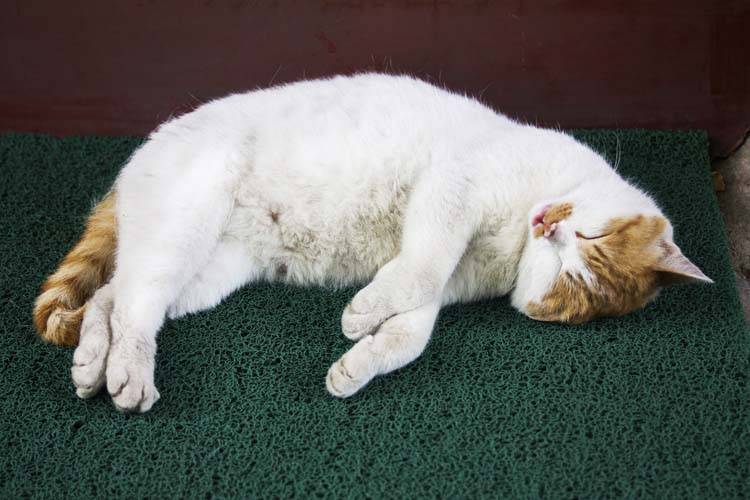Cat Body Language
Cats have various ways of communicating how they feel. Before you adopt or work with a cat, you should learn how to read cat body language to better communicate with your pet.
Cat Communication
Cats actually have many ways of communication. We’re probably most familiar with their voice. Cats have several types of meows, depending on what they’re trying to communicate. (Fun fact: Adult cats usually don’t meow at each other. They save it for their humans.) The one we most frequently hear is the “hello” meow. Of course, this is the cat’s way of saying “welcome home,” especially if he has been alone for the day. Of course, anyone who’s owned a cat can tell you about the slightly more urgent meow of “food time.” Additionally, if you have a cat who goes outside, you will note the longer meow of “please let me in.”
When a Cat Yowls
You may note that a previously quiet cat may become more vocal as he ages too. Cats can suffer from cognitive dysfunction and become confused. If you couple this with a bit of elderly loss of hearing, your senior cat may yowl. This yowl will be made loudly to seek reassurance from his owners.
Other Cat Noises
Along with meows, cats have a wide repertoire of chirps, growls, hisses and purrs. Cats will frequently chirp or chatter when highly excited. For example, they can become excited while hunting and having spotted prey. If they’re indoor cats, they may become excited when they have an interactive toy they are “hunting”).
RELATED: Inappropriate Urination in Cats
Growls and hissing are usually self-explanatory for both human and other cats. “You’ve caught me off guard, but I’m ready to tussle. Watch out!” is their main motive. Purring is an expression of contentment. However, many people may not know that a very stressed cat (say one in the exam room at a veterinary hospital waiting for vaccinations) may purr as well as an indication of stress.
Understanding a Cat’s Body Language
Body language is the main form of communication between cats. They use their ears, tail and body posturing, and even facial expressions.
The tail is a wonderful barometer of how the cat is feeling. A tail that is straight up, which may be shaking as well, indicates excitement. A tail moving side to side indicates the cat is becoming impatient, which could lead to a sudden whipping of the tail. A tail that is hanging down means the cat is relaxed.
Watch His Facial Expression for Clues
Facial expressions can give you some insight to what your cat is thinking. Ears that are held straight up and forward signal a happy, relaxed cat. Couple that with eyelids that are partially closed and winking means you have one very content cat. If your cat’s whiskers are positioned forward while his ears are in this position with narrow pupils, but wide eyes means he’s ready to play (watch your toes!).
A scared cat will have the whiskers positioned very close to the face, ears held flat and eyes wide with dilated pupils. Use slow movements when handling this guy. An angry cat will stare you down with narrow pupils. Those ears will be up a bit, but twisted back.
Read His Body Posture
A cat’s body posturing may be hard to determine, but when you take in other locations of the body, it’s easier to determine his state of mind. A cat holding his head up high or stretched out along with his back legs fully extended says this is one confident feline.
Whereas, a cat who has slightly bent hind legs and keeps his head down a bit along with being more compact in the body (crouching more or less) means the cat is feeling defensive and protective. We are all familiar with the Halloween cat stance–back arched, fully planted hind legs and erect fur–which means this is a very angry cat and needs to be approached with utmost caution.
When working with cats in any setting, it’s important to consider the cat’s body language. Being able to read his body language and facial expressions results in less stress for the cat and less injury to you, which is a win-win experience for all.
Sources:
ASPCA
Arizona Humane Society
You may also like: Facts About Catnip





